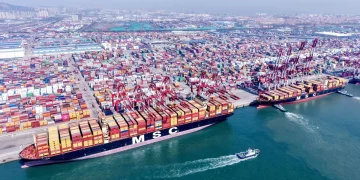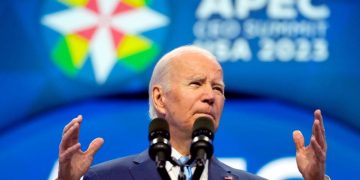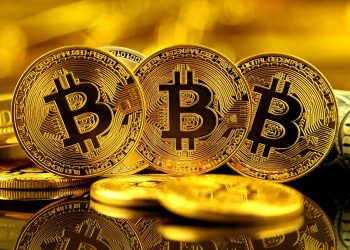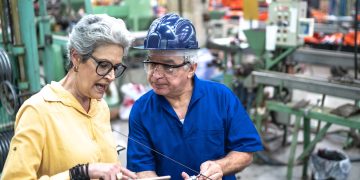Introduction
In the ever-evolving world of finance, key financial events have the power to dramatically reshape investment landscapes. Recently, various economic, political, and geopolitical developments have had a profound impact on both North and South American markets. From shifts in U.S. monetary policy to inflation concerns, trade agreements, and political instability in Latin America, these events are influencing investor strategies, risk perceptions, and capital flows across the Western Hemisphere.
This article will explore the key financial events that have recently shaped the investment environment in North and South America. It will also examine how these events are altering investor behavior, reallocating capital, and creating new opportunities and challenges for businesses and investors alike.
Section 1: The Impact of U.S. Monetary Policy on North and South American Markets
1.1 Interest Rate Hikes and the Strengthening U.S. Dollar
One of the most significant financial events impacting both North and South America is the U.S. Federal Reserve’s shift in monetary policy, particularly its decision to raise interest rates in response to rising inflation. This policy adjustment has had ripple effects throughout the Western Hemisphere, affecting everything from exchange rates to investment flows.
- U.S. Dollar Strength: The U.S. Federal Reserve’s decision to hike interest rates has strengthened the U.S. dollar, making it more attractive to investors seeking safer assets with higher returns. A stronger dollar has resulted in capital flowing into U.S. assets such as bonds and stocks, making it harder for emerging markets in South America to attract foreign capital.
- Currency Depreciation in Latin America: In South America, several countries have seen their currencies depreciate in the face of a stronger U.S. dollar. Countries like Brazil, Argentina, and Mexico have faced increased pressure on their exchange rates, as the stronger dollar makes imports more expensive and can contribute to rising inflation. This has led to a decline in investor confidence in these markets and a shift in investment away from emerging markets toward safer U.S.-based assets.
- Capital Flight and Investment Reallocation: As the U.S. dollar strengthens, capital flight from emerging markets has become a growing concern. Investors in South America are increasingly reallocating funds into U.S. equities, treasuries, and dollar-denominated assets. This trend is also visible in North America, where U.S. investors are focusing more on international markets that benefit from the stronger dollar or those that provide an alternative to U.S. assets.
1.2 Inflation Concerns and Investor Sentiment
Inflation, particularly in the U.S. and several Latin American countries, has emerged as a key financial concern that affects the investment climate in both regions. In North America, rising prices are influencing central bank policies, corporate profits, and consumer spending.
- U.S. Inflation and Fed Policy: Rising inflation in the U.S. has prompted the Federal Reserve to implement a series of rate hikes to combat soaring prices. Higher interest rates are typically bearish for stocks, particularly growth stocks, as they increase the cost of borrowing and reduce consumer spending. This has resulted in increased volatility in the U.S. stock market, with investors shifting to sectors such as energy, utilities, and consumer staples, which tend to perform better during inflationary periods.
- Inflation in Latin America: Inflation has also been a persistent issue in many Latin American economies, particularly Argentina, which is experiencing hyperinflation, and Brazil, where inflation is hovering at elevated levels. High inflation in these markets is undermining purchasing power and contributing to political instability. This scenario is leading investors to reassess their positions in Latin American assets, as local currencies lose value and companies face rising input costs.
- Impact on Bonds and Fixed Income Investments: The rise in inflation in both regions has driven up bond yields as investors demand higher returns to offset the risk of inflation eroding the purchasing power of future cash flows. For South American investors, inflation-linked bonds or local currency debt may offer some hedging opportunities. However, foreign investors are becoming more cautious, and fixed-income investments in emerging markets have become less attractive due to higher risk.
Section 2: Political Uncertainty in South America and Its Effects on Investment
2.1 Political Instability in Key Latin American Economies
Political events in Latin America have been significant drivers of market volatility and changes in investor sentiment. Political instability, corruption scandals, and government policy shifts have created a challenging environment for investors.
- Brazil’s Political Landscape: Brazil, Latin America’s largest economy, has experienced considerable political turmoil in recent years, with corruption scandals and the impeachment of President Dilma Rousseff leading to uncertainty about the future. The election of President Jair Bolsonaro in 2018 brought additional uncertainty, with policies that are both pro-business and controversial in nature. This political volatility has led to fluctuations in the Brazilian Real and investor caution in Brazilian equities and fixed income markets.
- Argentina’s Economic Challenges: Argentina, which has a history of economic crises, is currently struggling with high inflation, mounting debt, and a fragile currency. The country’s political environment remains unstable, with frequent changes in economic policies, making it difficult for investors to gauge long-term opportunities. The government’s approach to debt restructuring and IMF negotiations will continue to influence Argentina’s ability to attract foreign capital.
- Mexico’s Economic and Political Reforms: Mexico has also seen political changes under President Andrés Manuel López Obrador, who has implemented significant reforms in sectors such as energy and labor. These changes have impacted foreign investments, particularly in the energy sector, where private companies are now facing more government intervention. While some investors remain optimistic about Mexico’s long-term growth prospects, others are wary of the increased risks associated with government policies.
2.2 Trade Agreements and Their Economic Impact
Trade agreements have long been a tool for driving economic growth and fostering regional integration in both North and South America. Recent trade agreements have reshaped how countries engage with each other economically, providing new opportunities and challenges for investors.
- USMCA (United States-Mexico-Canada Agreement): The USMCA, which replaced NAFTA, has had a profound impact on investment strategies in North America. The agreement strengthens trade ties between the U.S., Canada, and Mexico, improving the predictability and stability of the region’s investment climate. For investors, the USMCA ensures smoother trade relationships, lower tariffs, and better protection for intellectual property rights, all of which contribute to greater investor confidence.
- Mercosur and South American Integration: In South America, the Mercosur trade bloc, which includes Brazil, Argentina, Uruguay, and Paraguay, plays a key role in fostering trade and investment within the region. However, political challenges within the bloc, such as Argentina’s economic instability and Brazil’s shifting trade policies, have made it difficult for investors to capitalize on regional integration. As Mercosur negotiates trade deals with the European Union and other global partners, its future role in regional investment flows remains uncertain.
- China’s Growing Influence in Latin America: In recent years, China has become a key trading partner for many Latin American countries, offering substantial investments in infrastructure, natural resources, and technology. This growing relationship has opened new opportunities for investors, particularly in countries like Brazil, Chile, and Argentina, which export significant quantities of commodities to China. However, there is also concern about over-reliance on Chinese capital and the potential political ramifications of this growing economic partnership.

Section 3: The Role of Commodity Prices in Shaping Investment Strategies
3.1 Energy and Natural Resources
Commodity prices, particularly those for energy and natural resources, have a profound effect on the investment climate in North and South America. Price fluctuations in oil, gas, and metals are driving investment decisions, particularly in Latin American countries that rely heavily on commodity exports.
- Oil and Gas in North America: The U.S. shale oil industry has benefitted from higher global oil prices, leading to increased exploration and production. In Canada, the oil sands sector has attracted both domestic and foreign investments as oil prices rise. Investors are focusing on energy companies that are well-positioned to capitalize on the ongoing recovery in oil prices.
- Commodity-Dependent Economies in South America: Countries like Brazil, Chile, and Peru, which are major exporters of metals like copper and iron ore, have seen fluctuations in commodity prices impacting their economies. Investors in these countries are sensitive to shifts in global commodity demand, as these countries’ economic growth is closely tied to the performance of these markets. Rising demand for electric vehicles, in particular, has driven up prices for lithium and copper, offering opportunities for investors in these sectors.
- Environmental Factors and Sustainability: As global demand for sustainable energy increases, many Latin American countries with vast renewable energy potential are attracting investments in wind, solar, and hydroelectric power projects. These green energy opportunities are particularly appealing for investors interested in sustainable growth and long-term returns.
Section 4: Conclusion
Recent key financial events have reshaped the investment landscape in North and South America in several significant ways. In North America, rising inflation, interest rate hikes, and the strengthening U.S. dollar have shifted investment flows, while in South America, political instability, inflation, and the economic challenges in key countries have created both risks and opportunities.
As the U.S. continues to adjust its monetary policies, Latin American economies will need to adapt to the effects of currency depreciation, capital flight, and shifting global trade dynamics. For investors, this means recalibrating their strategies to account for both the opportunities presented by emerging markets and the risks associated with political and economic volatility.
In conclusion, while recent financial events have presented challenges, they have also opened up avenues for informed and strategic investments. By understanding these macroeconomic trends and market shifts, investors can position themselves to capitalize on emerging opportunities in both North and South America.
































